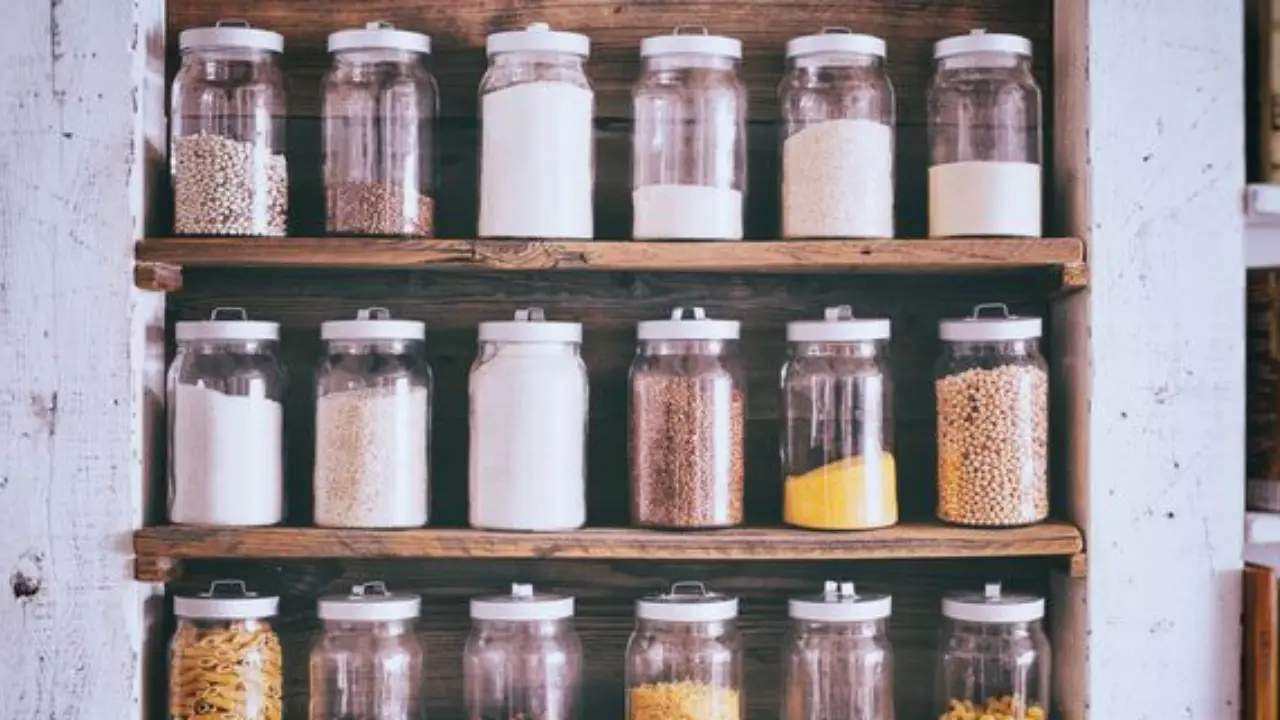A pantry is a great place to store food and cooking essentials, but it can become a mess if you don’t have a system to keep it organized. If you’re tired of searching for ingredients or forgetting what you have, it’s time to organize your pantry into zones. Zoning your pantry helps you see what food you have, what you need to restock, and where the groceries belong. In this article, we will explore the best way to organize your pantry into zones and providing you with practical tips.
Introduction
A well-organized pantry saves you time and energy and reduces food waste. You can identify products and organize your storage space by separating your pantry into several zones.
Organize your shelves by removing everything.
To organize your pantry, take everything off the shelves and assess what you have. Check the expiration dates and toss anything past its prime. Go through editing your items until you have the essentials you need. You can also donate any unopened food you don’t use or need to a local food bank or charity.
Group Like With Like
Start organizing your pantry by working in zones and grouping similar items. For example, baking goods like flour, sugar, and baking powder can all go in their zone. Other standard zones are breakfast, snacks, canned goods, pasta and grains, sauces and condiments, spices and herbs, beverages, and pet food. You can also create zones for specific purposes, such as weeknight dinners, lunch on the run, or impromptu entertaining. Label each zone with a clear and simple name to find what you want quickly.
Consider Frequency of Use
Also, consider how often you access each category of food. Keep items you use within easy reach in an open bin or stored on a lower shelf in a canister. The things you use occasionally can live on a higher shelf but are still visible and accessible in labeled bins, tiers, or canisters. The items you never use, or back-stock, should be less accessible so they don’t take up valuable real estate. For example, you can store them on the top shelf or in the back of the pantry.
Purchase Organizing Systems
You do not need a high-tech organizing system to streamline your pantry successfully. Use simple and inexpensive solutions such as clear containers, baskets, jars, lazy susans, shelf risers, hooks, and labels to keep your items neat. The key is to select organizers that fit your space and things well. You should also ensure that they are simple to clean and maintain.
Maintain Your Zones
Do not let your pantry revert to chaos once you have organized it into zones. Make it a point to return things where they belong after using or purchasing them. You can also check in every week or month to see if anything needs replenishing or rearranging. Organizing your pantry into zones saves time and money, reduces food waste, and allows you to enjoy cooking more.
Add some personality
It does not have to be challenging to organize your pantry. Using colorful containers, labels, or stickers, you can add personality and flair to your zones. You can also use a chalkboard, corkboard, or magnetic board to write notes, menus, or reminders on your pantry door. You can also show off artwork, photographs, or quotes that inspire or make you happy. Make your pantry a place that reflects your style and taste.
Enjoy Your Well-Organized Pantry
Now that your pantry has been divided into zones, you can reap the benefits of having a well-stocked and well-organized food storage area. By organizing your pantry into zones, you can find what you are looking for quickly and easily, saving you time and energy. In addition, you can plan your meals better and cook more creatively with the ingredients you already have on hand. Furthermore, you will save money by not purchasing duplicates or extraneous items. Most importantly, you will have more fun in the kitchen and less stress.
Conclusion
Creating zones in your pantry is a simple and effective way to keep your kitchen organized and functional. You can create a system that makes it easy to find items and reduces food waste by using the methods suggested in this article. If your pantry is well-organized, you will spend less time looking and more time enjoying your cooking.
FAQs
Q1: What are some pantry zone examples?
Baking, breakfast, snacks, canned goods, pasta and grains, sauces, condiments, spices and herbs, beverages, and pet food are all standard pantry zones. You can create zones for specific purposes, such as weeknight dinners, on-the-go lunches, or spontaneous entertaining.
Q2: How do I label the different sections of my pantry?
Labels, such as stickers, tags, or markers, can be used. You can also write labels on your pantry door with a chalkboard, corkboard, or magnetic board. The most important thing is to keep your titles simple, so you can easily find what you need.
Q3: How do I keep my pantry zones clean?
The best way to keep your pantry zones clean is to return items to their proper locations after using or purchasing them. You can also check your zones weekly or monthly to see if more or less is required. You can also regularly wipe down your shelves and containers to keep them dust-free and fresh.
Q4: Should I label all of my pantry’s containers?
Labeling containers is helpful, especially for products housed in opaque or similar objects. Clear labels help identify the contents quickly.
Q5: How long does it take to zone organize a pantry?
The time necessary depends on the size and quantity of clutter in the pantry, but the long-term advantages make it worthwhile.



